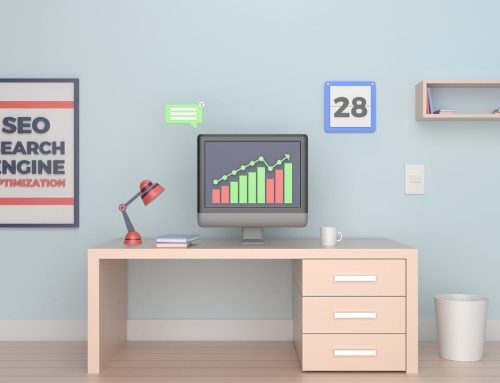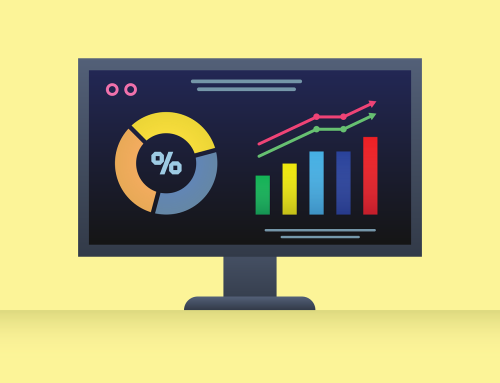Search Engine Optimization (SEO) is an interesting topic. There are a lot of ways people claim you can improve your search results. Some of them work. Some just don’t. The problem is that there is one real search engine everyone always focuses on; Google. And Google is pretty secretive about how they rank websites.
At first their algorithms were pretty straight-forward. If you linked to a bunch of other sites and inject hordes of keywords in your <body> then you would likely move upward in ranking. But then black-hat search engine optimizers figured out that Google was doing this. These optimizers began to use it to their advantage. You may recall, years ago, coming across a page that seemed to have an obscene amount of ‘dead space’ at the bottom of the page. These optimizers would place large amounts of keywords usually using the same color as the background to hide them.
Long story short Google has continually caught on to optimizers taking advantage of their ranking algorithms and have tweaked them to avoid these types of situations, thus enforcing legitimate results. So, over time Google has become very cryptic as to how they rank sites. By leaving optimizers in the dark they are avoiding any misuse of their service. Yet, there are some well-known ways in which you can improve your pages to improve their ranking. This is what I will be covering for the remainder of this post.
Content is King
Content is and always will be king. Remember that. There is no better way to improve your ranking. If your page does not have much to it then it will fall behind. If you are making a site for yourself, or your business, then be sure to put a good amount of content on it. If you are designing a page for a client you should educate them of this fact, since they will likely be responsible for filling in the blanks.
This does not mean that you should fill your page with garbage. You want there to be a good amount of content but it should be of high quality and related to the website. Also, a blog is always a good way to add content to a site. If you ever use a service like HubSpot’s Website Grader you will see a check for a blog on your site. It is arguable if Google cares that you have a blog but it is true that a blog will help in respect to content.
Hiding Text via text-indent
Developers often put icons or logos on a site by using a <div> or <span> and then employing CSS to set its height, width and background to match that of the image. To the user this works well. But as Google’s web spider crawls your page it doesn’t take into account any CSS. So what the <div> does not benefit the page in terms of ranking.
Now, let’s say that you have this <div> at the top of your page and it displays a company logo. You could put the company name within the <div> so that Google recognizes it. While doing this give the <div> a class that will be used to hide the text from users.
<div id='logo' class='notext'>Company Name Here</div>
Now for the CSS that does the hiding (the class of ‘notext’):
#logo {
width:200px;
height:200px;
background:transparent url(logo.gif) no-repeat left top;
}
.notext {
text-indent:-9999px;
color:transparent;
}
The text-indent of -9999px bumps the text way to the left, setting it off of the viewable page. This works on all browsers. The text color of transparent is not really needed, and doesn’t work in some browsers like IE. I usually add it in as an extra precaution.
Domain Expiration
This one is a bit arguable, but I do believe it helps. Many people suggest that if your domain is set to expire within a year then search engines like Google will rank it lower since the chance of the site becoming unavailable is greater. Correcting this is pretty straight forward. Make sure your domain is renewed for a number of years.
Meta Tags
Meta tags are interesting. Some are important, others are not. To start, consider the title tag. Your title tag is important to your ranking. It should be short and sweet. One problem I see all too often is a website putting its name first on all page titles. If you go to the blog on Pushing Buttons the title should not be “Pushing Buttons – Blog.” It should just be “Blog.” Search engines, as well as the users doing the searching, can tell what site they are looking at. You don’t have to throw it at them every time.
The description tag is also useful. Honestly I’m not sure to what degree Google cares about it. But it should still be taken seriously since users using Google will see it displayed under the page title. And SEO doesn’t mean anything if it doesn’t pull in users.
As for the keyword tag, Google has stated that they do not take this into account. For a very long time optimizers pushed use of the keyword tag. Now that Google has stated their position it has changed drastically. I continue to use the tag at times but knowing that Google doesn’t use it and users never see it gives me little to no incentive.
Use Headers Properly
Use header tags (<h1> through <h6>) properly. You should never have more than one <h1> tag on a page. Having multiple brings the strength of it down severely. I usually set the website name or company name as an <h1>.
From <h2> to <h6> you can add multiple occurrences. Any major headers should be an <h2>, sub-headers should be an <h3> and so on.
Link Building
I usually find this the most useful when writing a blog. But you cannot force clients to do this on their own posts. When writing a post, or even on a normal page, you should wrap any text referencing a company or website with a link to it. Search engines will detect that the links are relevant to your content, thus improving your content’s relevancy, thus improving your ranking.
Avoid Flash
Until recently search engines could not crawl through flash (or similar) content. Google has added support for crawling flash but it still does not compare to traditional content. Flash should be left to banners and other features that annoyingly alienate users.
Keep Content Fresh
Another aspect that Google takes into account is how often your site is updated. If you have a blog but never write any posts Google will gradually decrease the time between crawls. Since Google has a lot of sites it must crawl it chooses to crawl sites that change often more often.
So if you have a website and never update it then Google will take its sweet time to check back in. Let’s say you then make a big update and you really want it to reach your audience. Since Google has put you late in the queue you will have to wait some time. If you had been making periodical additions to your site then you really wouldn’t have to wait long for it to show up on results.
Another point to stress is that if you put up a “coming soon” or “under construction” landing page that is static for a long period of time Google will consider the site to be dead. Then when you launch the actual site it will take a bit of time for Google to regain its trust and check for updates regularly. Some optimizers argue that you should avoid using these landing pages altogether, and that no page is better than a “coming soon” page.
If your page has been static for a long period of time and you do make an update you can also re-submit your site to Google. This will likely bring you upward in the crawl queue, but it will not correct the issue altogether.





